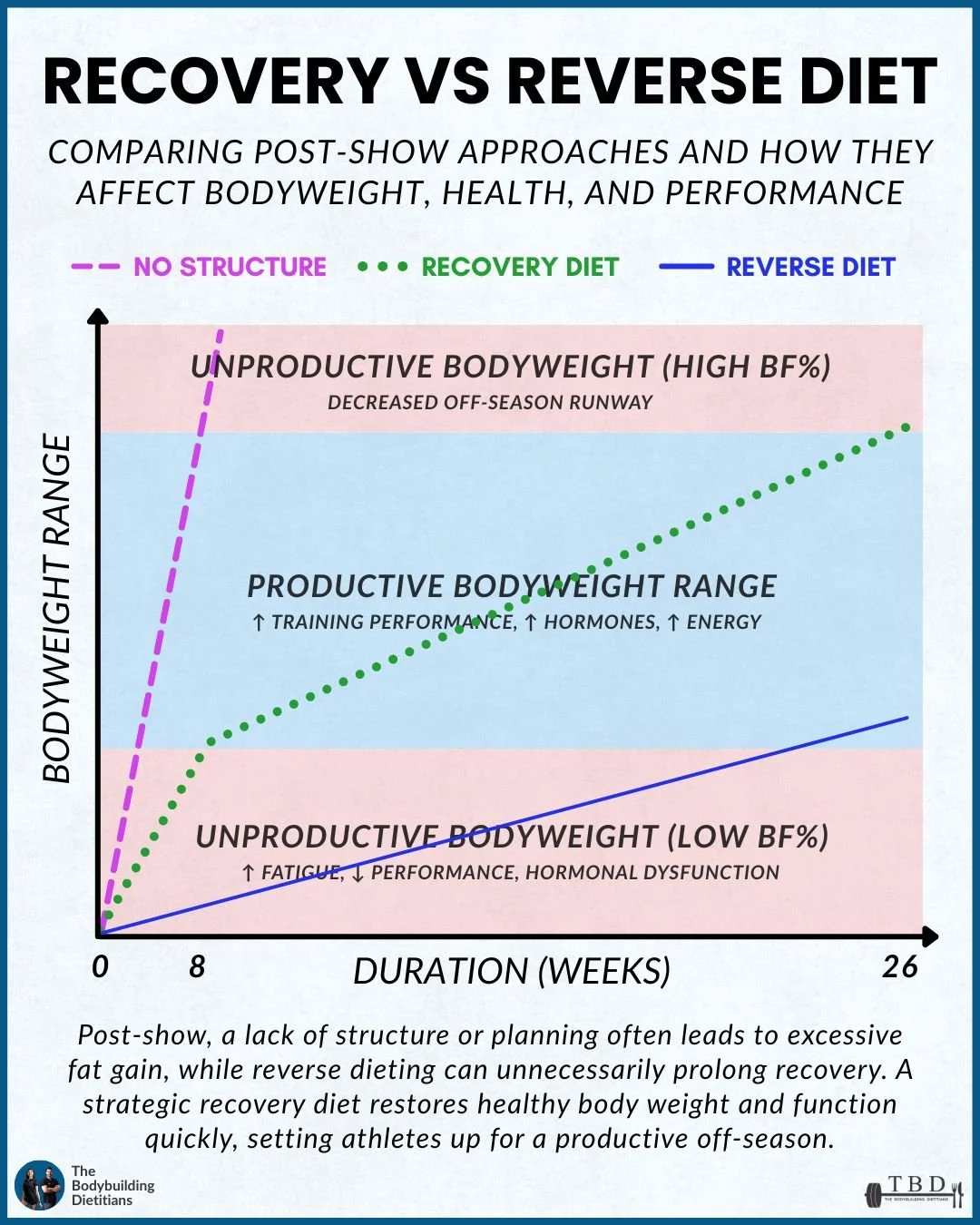The wrong post show approach can set you back months
The weeks after stepping off stage are just as important as the prep itself. Physiologically, you are in a state of low energy availability, with suppressed testosterone and thyroid hormones, altered leptin and ghrelin signalling, and reduced training performance capacity. How you manage this period will dictate the speed of your recovery, your ability to perform in the gym, and how much truly productive time you get in your off season.
The Risks of a No Structure Approach
Without a plan, it is easy to overshoot calorie intake. Hunger hormones are elevated, satiety signalling is blunted, and there is often a psychological rebound from prolonged restriction. This can push calorie intake far beyond your energy needs, resulting in rapid fat gain and body fat levels that impair insulin sensitivity and training performance. The outcome is a shortened off season runway, meaning less time in a productive surplus before needing to diet again.
The Drawbacks of a Reverse Diet
Reverse dieting, slowly adding calories (often around 100 kcal per week), can be too conservative post show. While it may limit rapid fat gain, it often prolongs the energy deficit for weeks or even months. This delays restoration of endocrine health, keeps fatigue elevated, and makes it harder to train at the necessary volume and intensity for muscle growth. Reverse dieting has value in certain scenarios, such as between shows within the same season, but as a recovery method after a long prep, it can unnecessarily slow your return to baseline health.
Why a Recovery Diet Strikes the Balance
A recovery diet aims to restore body weight and body fat to a healthy, productive range within the first 4 to 8 weeks post show. This approach accelerates the normalisation of hormones, metabolic rate, and psychological well being. Once baseline health is restored, calories can be increased more gradually to support lean mass gains without excessive fat accumulation. This provides the longest possible productive off season while preserving training quality.
Individualisation Matters
Exact timelines and targets will vary. An experienced coach will consider your genetics, division criteria, training volume tolerance, health markers, and personal preferences when deciding how aggressively to recover. In most cases though, prioritising a swift return to baseline health offers the best platform for future growth and performance.
